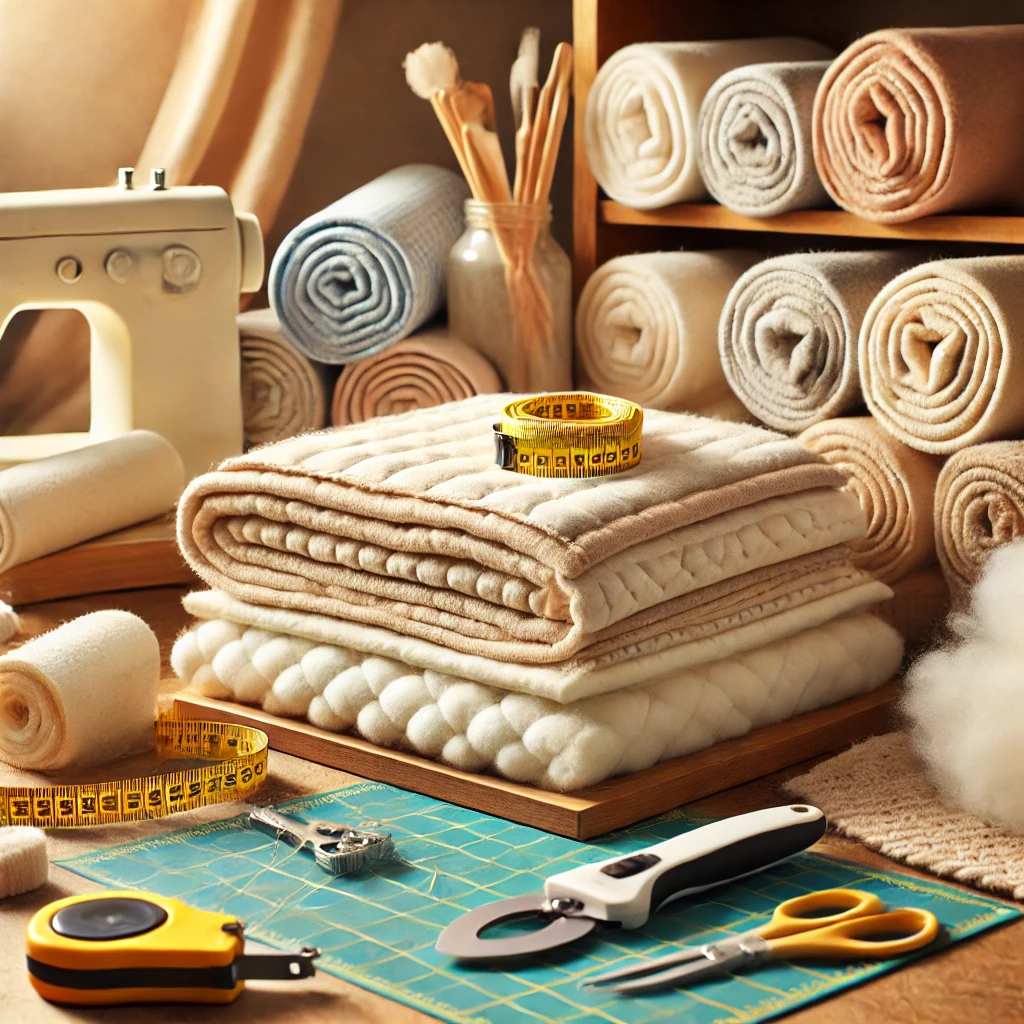
The Best Quilt Batting for Every Project: A Quilter’s Guide
Share
Quilt batting is the unsung hero of quilting. It provides warmth, loft, and structure, yet choosing the right one can feel overwhelming. With so many options—cotton, polyester, wool, and blends—it’s easy to get lost in the details. In this guide, we’ll break down the best quilt batting for every type of project so you can make an informed decision and achieve the perfect finish.
What Is Quilt Batting?
Batting, also called wadding, is the layer of insulation between your quilt top and backing. It comes in different fibers, thicknesses (loft), and densities, all of which affect how your finished quilt will look and feel.
Whether you want a warm winter quilt, a lightweight summer throw, or an heirloom-quality masterpiece, choosing the right batting is key to getting the results you want.
Cotton vs. Polyester vs. Wool Batting: Which One Is Best?
Three of the most common batting materials are cotton, polyester, and wool. Each has its advantages, depending on your project.
Cotton Batting
• Best for: Traditional quilts, hand quilting, lightweight summer quilts
• Pros: Natural fiber, breathable, soft drape, clings to fabric for easier quilting
• Cons: Can shrink slightly after washing, heavier than polyester
Cotton batting is a classic choice for quilters who love natural fibers. It creates a soft, vintage-style quilt with a slight crinkle after washing. However, it does tend to shrink about 3-5%, so pre-washing is recommended if you want to avoid this
Polyester Batting
• Best for: Baby quilts, budget-friendly projects, allergy-friendly quilts
• Pros: Lightweight, inexpensive, won’t shrink, holds its shape well
• Cons: Less breathable, can feel synthetic, slippery for machine quilting
Polyester batting is great for quilts that need to be lightweight yet warm. It’s also a fantastic choice for machine quilters since it resists shifting and stretching.
Wool Batting

• Best for: Heirloom quilts, cold-weather quilts, hand quilting
• Pros: Incredibly warm yet lightweight, naturally moisture-wicking, resists creasing
• Cons: More expensive, may require special care
Wool batting is a favourite among quilters looking for warmth without bulk. It has a beautiful loft that adds dimension to quilting stitches, making it a great choice for hand quilting. It’s also naturally breathable, keeping you warm in winter but cool in summer.
Tip: If you love the durability of polyester but want a softer feel, look for a cotton-polyester blend. These blends combine the best of both materials.
A Quick Batting Weight Guide
Batting comes in different thicknesses, known as loft. Here’s how to choose the right weight for your project:

Choosing Quilt Batting by Project Type
Not all quilts are the same, so your batting choice should match the quilt’s purpose.
1. Best Batting for Baby Quilts
• Recommended: Polyester or cotton-poly blend
• Why? Lightweight, soft, and easy to wash
Baby quilts get a lot of love (and spills), so go for a batting that holds up well to frequent washing.
2. Best Batting for Hand Quilting
• Recommended: Wool or 100% cotton (low loft)
• Why? Soft and easy to stitch through
Wool batting is a dream for hand quilters because of its natural loft and ease of needle penetration. Cotton is also a solid choice if you prefer a thinner quilt.
3. Best Batting for Machine Quilting
• Recommended: Cotton-poly blend or 100% polyester
• Why? Smooth surface and stability for even stitches
Blended batting is often the best of both worlds—natural fibers with added durability.
4. Best Batting for Warm Quilts
• Recommended: Wool or high-loft polyester
• Why? Wool traps heat while remaining breathable
For extra warmth, opt for wool batting. It’s surprisingly lightweight yet provides excellent insulation.
5. Best Batting for Summer Quilts
• Recommended: 100% cotton (low loft) or bamboo
• Why? Breathable and moisture-wicking
If you want a quilt that’s cozy but not too hot, cotton or bamboo batting is ideal. Bamboo is especially great for humid climates.
Final Thoughts
Choosing the best quilt batting depends on your project, quilting method, and personal preferences. Whether you need a soft baby quilt, a durable machine-quilted design, or a cozy winter bedspread, there’s a perfect batting for you.
Want to learn more about quilt materials? Check out our guide to Choosing the Best Colour Palette for Your Quilt to complete your quilting knowledge!
What’s your favourite quilt batting to use? Let us know in the comments!
